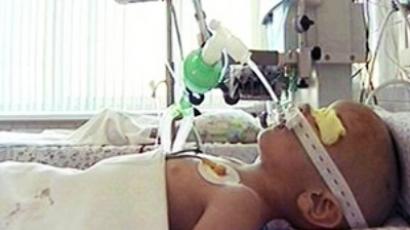25 years on: Indian industrial catastrophe still echoes in people’s lives
25 years ago on December 3, the Indian city of Bhopal experienced the world's worst industrial catastrophe. Poisonous gas leaked from a chemical plant in the area, killing thousands of people in 72 hours.
But more than two decades on, the tons of abandoned toxic chemicals continue to kill the residents and pollute the ground water in the area.
In the bustling city of Bhopal, an old factory gate may look like just a regular one. But lurking behind it is a former pesticide factory that has been closed for 25 years. Here at Union Carbide, a tragedy unfolded in the early hours of December 3, 1984.
Today the old factory is Ground Zero of what was the world's biggest industrial disaster. Toxic chemicals from this Union Carbide factory in the center of Bhopal spewed out at night and spread across the city, killing tens of thousands of people. Those who survived still suffer from after-effects a quarter of a century later.
“When we inhaled the toxic gas, we started vomiting immediately,” says survivor Devi Singh. “Those who threw up survived, those who didn't died. People began running everywhere; they didn't know what was killing them. Some people survived by covering their faces with wet cloth.”
“No survivor is able to work properly,” said another survivor, Abdul Rashid. “If we try working, we lose our breath, and we're forced to stop working after 2 days. Whatever we do earn is spent on medical treatment, so we cannot feed our families. Our children should be offered jobs in compensation.”
In 1989, Union Carbide agreed to pay $470 million in compensation. But with each survivor receiving a mere $1,000 this is considered inadequate. Activist Satinath Sarangi wants Dow Chemical, the US company that bought Union Carbide, to pay more compensation and to clean up the toxic waste from the plant site.
“In the US, Dow Chemical has paid compensation to victims of Union Carbide in cases of asbestos, and there they have accepted that yes, they inherited Union Carbide's liabilities – and yet they refuse to do it in Bhopal,” said the activist.
Getting justice for the survivors of the disaster is a cause that has strong support internationally. Artists from America have raised funds to express their solidarity with the people of Bhopal.
“Clearly these are American multinational corporations, and not just these two, but lots of them go around the world arrogantly, thinking that they have no responsibility to the communities in which they set up shop, and if an accident happens, then ‘Well, isn't that too bad,’” said artist Janet Braun-Reinitz.
Toxic waste left behind at the factory is continuing to poison. The Delhi-based Center for Science and Environment says groundwater in the area has up to 40 times the levels of pesticides and heavy metals considered safe.
“What we find is that among the 30,000 people who have been drinking this contaminated water for the last 20 years, they suffer from a range of physical and mental problems: skin disorders, damage to the kidney, liver, lungs, brain. We find there are too many people with cancer in this area,” said Sarangi.
Contamination of groundwater poses an even bigger health risk than the initial gas leak. While the Indian government claims the factory site is safe, people here live in fear that the factory continues to kill, even after 25 years.













